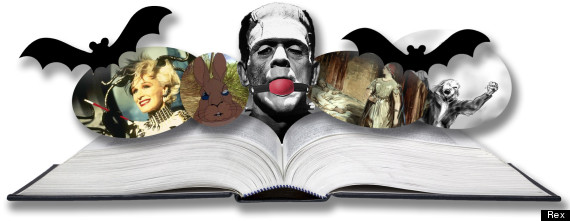To celebrate Halloween, we've put our heads together to compile a list of most terrifying fictional characters ever.

The famous monsters that inspire countless costumes at this time of year - your Draculas and your Frankensteins - are included of course, but did either of them scare their way to number 1?
1. Cthulhu (from "The Call of Cthulhu") is a fictional monster created by horror writer H.P. Lovecraft, published in the American pulp magazine Weird Tales in 1928, that is often depicted as a large cephalopod-like creature with a tentacled mouth, large wings, clawed hands and scaly skin.

2. Pennywise the Clown (from Stephen King’s "It"): Pennywise is completely remorseless, and has absolutely zero qualms in destroying youth. One of the nastiest child killers in history, Pennywise the Clown is without a doubt one of the most deplorable characters ever created. This monster enjoys some rather epic physical transformations, but none rival the primordial impact of that damned clown and those strangely menacing balloons. If you haven’t checked this classic novel out, it would probably be a wise idea to do so soon. Just don’t pick up It if you intend on getting a good night’s sleep. It’s just not happening.

3. Hannibal Lecter (from Thomas Harris, "Red Dragon"): Everyone loves a psychiatrist with a taste for flesh, right? Okay, perhaps not, but that doesn’t change the fact that Thomas Harris birthed a legitimately terrifying antagonist (perhaps anti-hero would be a better brand) the day he created Hannibal Lecter. Lecter is the ideal bad guy – hyper-intelligent, cunning; suave and always two steps ahead of the game. Much like Harris himself (seriously, who is this guy?!), there’s also an air of mystery surrounding Lecter. The man’s backstory runs deep, and has left Thomas Harris with a gruesomely gorgeous story to tell. Hannibal Lecter really is one of those rare personalities that could probably be explored for a solid five decades without ever having uncovered all of his calculated mystery.

4. Count Dracula (from Bram Stoker’s "Dracula"): We're not sure if anyone alive is actually unfamiliar with Count Dracula, and that says something serious about the power of Stoker’s novel. The now iconic piece of fiction – initially released in 1897 – didn’t break new ground, it completely shattered it, breathing new life into vampirism. Equal parts quiet eroticism and animalistic terror, Dracula opened up doors that very few literary works ever managed. If you’re not a fan of the original Dracula, chances are you’ve stumbled upon a mind numbing vampire tale or two. Those stories wouldn’t be here without Stoker’s effort, which, pacing issues or not, is a damn disquieting piece of work, showcasing one of the vilest and most frightening villains in history.

5. Satan (from John Milton's Paradise Lost): The ultimate villain in literature, Milton's continuation of the Biblical figure is a depiction of maleficence at its darkest. The self-indulgent fallen angel aims to destroy, embarking on a vendetta against his creator. He's the basis of evil upon which we have founded our opinion of villainy on so is fully deserving of a place on this list.

6. Frankenstein's monster (from Mary Shelley: Frankenstein (1818) : Shelley’s novel is still one of the most powerful novels of the Gothic period. This was a time of scientific exploration swathed in the fear and awe of religion. Her protagonist becomes God when he creates life from inanimate flesh. He seizes the very core power reserved for the deities alone. Man created fire and now Man has created life. She challenges the reader to abandon all notions of morality, social convention, and structure throughout this frightening look into power, control, and a god-like existence run amok.

7. Patrick Bateman (from "American Psycho") It’s hard to downplay the horrors that hide inside Bret Easton Ellis’ American Psycho. Ellis received hate mail, death threats and became the subject of immense criticism after serial killer Paul Bernardo was found with a copy of the book. And it’s understandable why the book was a bit, uh, shocking in the ‘90s. Ellis’ twisted satire of upper-class living played out much like Less Than Zero, both tales of hyper-wealthy individuals searching aimlessly for something in a world where everything was handed to them. In Patrick Bateman’s case, a Wall Street Yuppie finds murder as his escape. He tortures a homeless man. Breaks a dog’s legs. At one point, he gets his hands on a chainsaw. For some, it may seem like senseless violence for nothing—but the whole tale is a deep delve into Ellis’ own alienation and madness in the late ‘80s.












